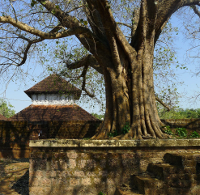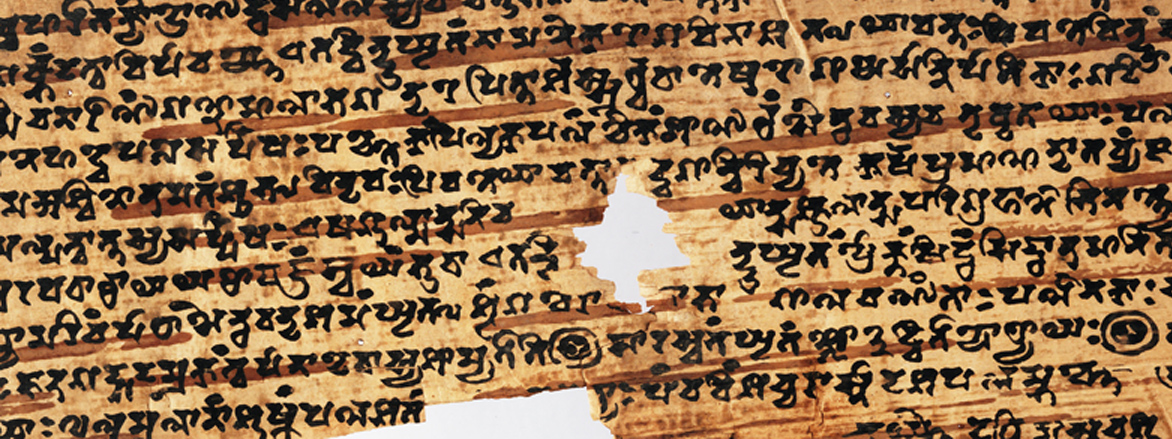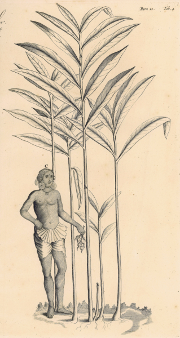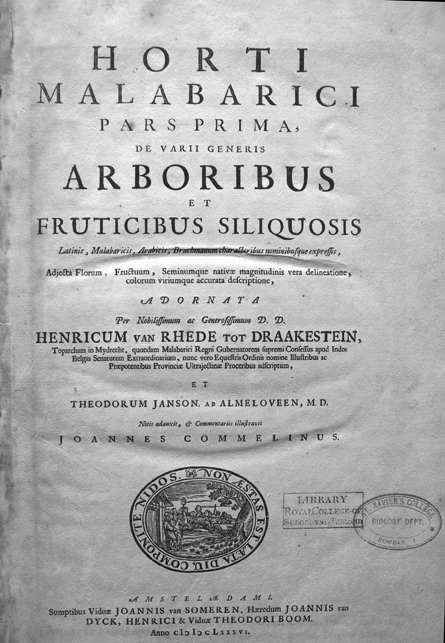 Archeological and modern genetic
evidence suggest that human populations have migrated into the Indian
subcontinent since prehistoric times. The knowledge of the medicinal
value of plants and other substances and their uses go back to the time
of the earliest settlers. The vast amount of medical knowledge that has
come down to modern times is the result of long evolution through trial
and error and exchange of know-how between diverse communities and
regions. The process of exchange and assimilation continues, and today
traditional medical practices are obliged to accommodate to the norms of
modern biomedicine. However there is growing awareness among the
scientific community and the general public about the intrinsic value of
traditional medicine, and as a result Ayurveda, Unani and Siddha have
entered the mainstream to compliment biomedicine. The challenge today is
to integrate the best of the different healing traditions to meet the
healthcare needs of contemporary society.
Prehistory
Excavations at different sites suggest
that medical interventions such as dentistry and trepanation were
practiced as early as 7000 BCE in the Indian subcontinent. Organized
forms of agriculture practiced by the people of the Indus civilization,
the importance they gave to certain medicinal plants and trees and the
emphasis on hygiene and water sanitation suggest an advanced awareness
of health management. Trade routes linked the Indus valley civilization
to other parts of the subcontinent and westward to Persia, Mesopotamia
and the Arabian Sea, and northward to Central Asia. It is highly likely
that botanical and medical commodities and knowledge were among the
prized items of exchange. Recent archaeo-botanical excavations give
evidence for the use in the Middle Gangetic region of medicinal plants
since the 2nd millennium BCE that are still used by Ayurvedic physicians
and folk healers (1).
Vedic Period
The Vedic hymns of the migrant Aryan
tribes are the earliest literary source of information about healing
practices in the sub-continent. These hymns provide insights into
diseases prevalent during the period and their perceived causes. Most
ailments, both physical and mental, were attributed to malevolent
spirits and cures consisted of rituals, charms, mantras, medicines and
surgical intervention. The hymns in the Atharva Veda, the last of the
four Vedas, and largely composed after the Aryans were well settled in
the sub-continent, indicate that indigenous non-Aryan healing practices
had influenced the Vedic Aryan healers (2).
Post-Vedic Period
The Sanskrit-speaking Vedic Aryan
influence eventually spread eastward from the Punjab and Doab region
towards the Middle Gangetic plains, which had its own socio-cultural and
linguistic context. This was a period when diverse cultures were
interacting in small kingdoms and urban centers and there was growing
awareness of the influence of life-style and regimens on health and
well-being. In such a context, in the region east of the confluence of
Ganga and Yamuna, Buddhism, Jainism and other new ascetic and
philosophical movements arose. Many of these movements promoted free
spirit of enquiry and experimentation in all fields of knowledge,
especially in medicine. We find early Buddhist and Jaina texts in
Prakrit (Pali and other vernacular languages) describing the use of
medicines, surgical procedures, trepanation, purges and emetics,
practices consolidated from all levels of society. The early texts also
recognized the importance of cultivating compassion and humanistic
values as being essential for health and well-being (3).
|
|

The
poor, those suffereing from disease and those afflicted by sorrow
should be helped. Even insects and ants should be treated with
compassion, just as one's own self.
(Ashtangahrdayam Sutrasthanam 2.23)
|
| Buddha himself was seen as the “healing guru” (Bhaishajyaguru)
and healing practices were part of the Buddhist monastic tradition.
Medical centers privileging humanistic values that were attached to
Buddhist monasteries catered to monks and lay persons. Buddhist monks
disseminated Indian medical knowledge westward to Persia and Central
Asia, to China and to South-east Asia. Buddhism also took with it
medical knowledge to southern part of the sub-continent and Sri Lanka,
especially during and after the reign of Ashoka the Great. |
|

The Bower Manuscript, 4-6 CE
Discovered in Central Asia
(Bodleian Library, Oxford University)
|
Emergence of the Ayurveda Tradition
The spirit of scientific enquiry influencing the intellectual world
since the time of Buddha led to old belief systems being questioned and
tangible proofs being sought after. In this cultural milieu in the
Indo-Gangetic and lower Himalayan regions, tribal and wandering healers,
learned physicians, ascetic and yogic traditions such
as Buddhism and Jainism, and philosophical schools such as Samkhya,
Visheshika and Nyaya all contributed to the emergence of a formal
scientific culture of healing that became Ayurveda.
Sanskrit, which is the language of the Vedas and Brahminical culture,
reemerged as the dominant scholarly medium around the beginning of the
Common Era. The earliest works on Ayurveda probably dealt with one
specific branch of medical practice. The fundamental concepts and
practices of Ayurvedic healing continued to be elaborated and refined
over centuries and were codified during the early centuries of the C.E.
in treatises composed in Sanskrit. The earliest available works are Caraka Samhita, Sushruta Samhita, Ashtangahrdayam, Ashtangasamgraha, Bhela Samhita and Kashyapa Samhita,
the latter two in incomplete versions. These works are compilations of
medical practices composed in a systematic manner and define principles,
therapeutic methods and moral guidelines for medical practitioners. Ashtangahrdayam
(circa 6-7 century C.E.) organized the theory and practice of Ayurveda
in a coherent fashion and is considered to mark the culmination of the
classical period. While these works set the norms for the future of
Ayurveda, other works, some specializing in particular branches of
medicine were also composed during this period. The multi-cultural
origins of Ayurvedic knowledge that we alluded to earlier are revealed
in the classical texts themselves. Both Charaka Samhita and Sushruta Samhita urge physicians to seek the help of cowherds, hunters and forest-dwellers for procuring medicinal plants. In the Charaka Samhita,
we notice the participation and contribution of a Central Asian
physician in one of the assemblies of scholars gathered to formulate the
principles of Ayurveda. While the three major classical texts attribute
the origin of Ayurveda to Vedic divinities, they give importance to
Buddhist moral values, and Vagbhata, the author of one of the classical
texts (Ashtangahrdayam), was a Buddhist. |
|
Knowledge
of medicinal plants and their identification should be gained with the
help of cowherds, hermits, hunters, forest-dwellers and those who gather plants of the forest for food.
(Sushruta Samhita, Sutrasthanam 36 V.10)
|
|
Persian and Arab Influences
Trade and exchange of medicinal plants
and knowledge of their uses have gone on for centuries between the
Indian subcontinent, West Asia and the Indian Ocean world. From the end
of the first millennium C.E. physicians coming from Persia and
neighboring regions brought their healing practices to the subcontinent
and influenced local healers and Ayurvedic practitioners. In turn
Ayurvedic treatises were translated into Persian, Arabic, Tibetan and
Chinese.
|
|
|
|
Unani, Rasashastra, Siddha and Sa-Rigpa Traditions
There are other formal systems of
medicine such as Unani, Rasashastra, Siddha, and Sa-Rigpa that have been
practiced in the subcontinent. Unani is an Arab medical tradition that
has its origin in the Greek Ionian medicine (the word Unani being an
Arabic adaptation of the word Ionian). During its development in India,
Unani incorporated elements of indigenous materia medica from
Ayurvedic and folk sources. It is still practiced and popular in India
and Pakistan. Rasashastra is an ancient tradition of healing that uses
medicines incorporating metals, especially Mercury and gold, purified
using complex procedures. The tradition maintains that Rasa formulations
in association with yogic and tantric practices give extraordinary
powers like arresting the process of ageing. Certain Rasa medicines were
incorporated into Ayurveda and Siddha. The Siddha tradition is an
ancient south Indian system that developed especially in the Tamil
speaking region and continues to be popular there. It integrated
elements of Ayurveda, Rasashastra, Yoga and Tantra and uses alchemically
prepared metals along with medicinal plants. Siddha system is said to
have been influenced by contacts with Chinese and Arab medicine. The
Sa-Rigpa tradition practiced in Tibet and Himalayan regions is an
amalgam of Ayurveda derived from Vagbhata’s Ashtangahrdayam and folk practices along with a strong influence of Tibetan Buddhism.
|
|
 Ayurvedic Man Ayurvedic Man
Nepalese 18-19C Welcome Library no.574912i |
|
Regional Folk Practices
Even before medical knowledge was
codified into the canonical texts of Ayurveda, there were abundant
sources of medical knowhow in the subcontinent. Healing is practiced by
people from all levels of society who live and work in intimate relation
with their environment. They range from home remedies
related to nutrition and treatment for minor illnesses, to more
sophisticated procedures such as midwifery, bone setting and treatment
of snake bites and mental disorders. There were also specialists in
blood letting, experts in physical medical practices and others with
intimate knowledge of medicinal plants. All these areas of folk
practices have their particular folklore that preserved and transmitted
such knowledge. Some healing practices were considered to be sacred and
were associated with rituals that helped safeguard them. It is
interesting to note that in folk traditions there is considerable
overlap between healing plants and sacred plants, and certain healing
plants were venerated.
Traditionally Sanskrit-based Ayurvedic
practice was limited to certain segments of society, folk healers came
from all levels of society. Although folk practitioners from the lower
strata of society lack the scholarly aura, many who specialize in
specific healing practices are held in high esteem. For example, it is
not uncommon for scholarly Ashtavaidyas to seek the help of folk healers
in pediatric care, poison therapy or diseases of the mind. Classical
Ayurveda has been enriched over centuries through such interactions and
exchange with regional folk practices.
Traditional Indian Medical Writings
Literature on Indian medicine is vast
and there are large numbers of manuscripts in private and public
collections and libraries that still need to be documented and studied.
They include not only works on Ayurveda in Sanskrit and vernacular
languages, but also works on Unani in Urdu and Persian, and on Siddha
medicine in Tamil. Vernacular writings helped those literate healers who
were not Sanskrit savvy to inform themselves about the theory and
practices mentioned in classical works on Ayurveda.
Tribal medical traditions from
populations who had historically relied on their forest environments for
healthcare have made invaluable contributions to the materia medica of traditional medicine. Region specific materia medica of classical and folk medical traditions owe much to the tribal healing traditions.
From around the 8th century C.E. texts called Nighantus dealing exclusively with the materia medica
of Ayurveda were composed. Many of these works helped to enlarge the
repertoire of medicinal substances by incorporating knowledge of local
practitioners and from foreign sources. A few well-known Nighantus are Madanapala Nighantu, Bhavaprakasha Nighantu, Dhanvantari Nighantu and Sodhala Nighantu. Until very recently, it was common for Ayurvedic physicians to memorize a Nighantu of special relevance to their region or practice.
|
|
 Detail,fig.4, Vol.11, Detail,fig.4, Vol.11,
Hortus Malabaricus Amsterdam, 1692
|
|
Indian Medicine During Pre-colonial and Colonial Periods
As mentioned previously in this
introduction, over centuries Indian indigenous medical systems were
renowned for skilled physicians, sophisticated medical therapies and for
the extensive materia medica. While interplay of myriad
complex factors was responsible for the outcome, there is no debate
about the fact that traditional medicine entered a period of decline
during the colonial era.
|
|
“I feel bound to confess that it is not so valuable nor so certain as the herb which the Malabaris give….'' (Conversations on the Simples, Drugs and Materia Medica of India, Garcia da Orata, Goa, 1563) |
|
However, during the pre-colonial period
early Portuguese and Dutch settlers relied on the thriving medical
systems they found in India for their healthcare needs. There were very
few physicians among the early European settlers, and they did not have
the medicines or the knowledge needed to combat tropical diseases.
During this period it was official policy of the Portuguese and Dutch
governments in India to actively seek out and document Indian
traditional medical knowledge. Several books on Indian medicine written
during this period introduced Indian medical knowledge to European
medical schools, and botanical medical knowledge of India was
tremendously influential in the the global context. Works on Indian
botanical medical knowledge, by Garcia da Orta (1568), Christoval Acosta
(1578) and the 12 volume Hortus Malabarius (1678-1693) compiled by
Aadrian Van Rheede, became reference books for tropical botany and
medicine for a hundred years or more.
During
the early days of the British East India Company, Indian medical
knowledge and “native physicians” were important resources for the
colonial establishment. The skills of Indian physicians to treat
regional diseases and the rich materia medica of traditional
medicine put them at an advantage over the newly arrived British
doctors, struggling to deal with diseases unfamiliar to them. Later as
the British East India Company established itself in India, many British
physicians assumed broader scholarly roles as botanists, foresters,
zoologists, geologists and European medicine came to be looked upon as
the dominant medical knowledge system. By mid 19th C. British official
colonial policy marginalized indigenous medicine to secondary status.
And later as the Indian Medical Service opened to accept Indian
nationals, students from upper classes as well as Christians and Muslim
entered modern medical colleges and European medicine became the
official health care system.
Indian Medical Traditions Since The 20th Century
Even though during the British colonial
period official status of Ayurveda and other traditional healing systems
were relegated to secondary roles and western medicine became dominant,
Ayurvedic colleges offering diplomas were created and the study of
classical texts in Sanskrit were initiated in many centers around India. Many
of these institutions integrated Ayurveda education with biomedical
education curriculum and western concepts of disease and wellness.
Pharmaceutical companies also began to manufacture Ayurvedic and other
forms of traditional medicines on a large scale to deal with the
diminished capability of practitioners and patients to make medical
preparations.
After Independence, the government of India made efforts to recognize Ayurveda, Siddha and Unani as being on par with allopathic biomedicine. In 1964 a government body for setting norms
for the manufacture and the control of the quality of traditional
medicinal preparations was formed. In 1970 the government of India
passed the Indian Medical Central Council Act to standardize Ayurvedic
teaching institutions, their curriculum and their diplomas. More
recently the government created the Deparment of AYUSH (Department of
Ayurveda, Yoga & Naturopathy, Unani, Siddha and Homoeopathy) to
support research and development of traditional medicine, and to set
standards and regulate the activities related to practice. Today the
general trend is to comply with the norms of modern biomedicine. In
traditional medical schools the vocabulary and diagnostic tools of
modern medicine are replacing traditional terms, and techniques and
students are increasingly becoming unfamiliar with classical references
and methodologies.
In the last few decades there has been growing interest in alternative forms of therapy globally. In
addition, attempts by devotees of New Age culture to ascribe new layers
of meaning to the concepts of Ayurveda have propagated a simplified and
modified version of Ayurvedic culture and practice. While this has
stimulated the development of tourism for well-being, leisure Ayurveda,
in India, with spas and hotels offering different kinds of simplified
treatments, for many in India and abroad these commercialized variants
have come to represent Ayurveda.
There are attempts by biomedical and
Ayurvedic researchers to correlate Ayurvedic understanding of the nature
of disease with modern biomedical concepts. The materia medica
of Ayurveda has attracted the attention of researchers and commercial
concerns in India and abroad interested in identifying active molecules
and manufacturing commercial versions of traditional formulations. These
novel demands along with renewed popularity traditional medical
practices within India itself have created conflicting conditions for
traditional medicine in general and for Ayurveda in particular.
The hereditary Ashtavaidya Ayurveda
physicians of Kerala are among the small group of traditional medical
practitioners who have endeavored to retain the scholarly study and
practices of their ancestors. With changing social structure and the
norms imposed by the government regulations, Ashtavaidyas too are
striving to adapt their practice to contemporary standards. The
interviews that we conducted over the last few years with the remaining
Ashtavaidyas of Kerala highlight the issues that traditional medicine
faces in such a modern context.
A summary of our interviews with the Asthavaidya and our observations is given in the paper below
|
|

Hortus Indicus Malabaricus
Title Page Vol.1 of 12 Amsterdam, 1678
|
References
1. Upinder Singh, Nayanjot Lahiri, Ancient India: New Research, Oxford University Press, India 2010
2. Zysk,K. Medicine in the Veda: Religious healing in the Veda Motilal Banarisidas, Delhi 1996
3. Zysk, K. Asceticism and Healing in Ancient India: Medicine in The Buddhist Monastery, Motilal Banarisidas, Delhi 1998 |













0 comments:
Post a Comment